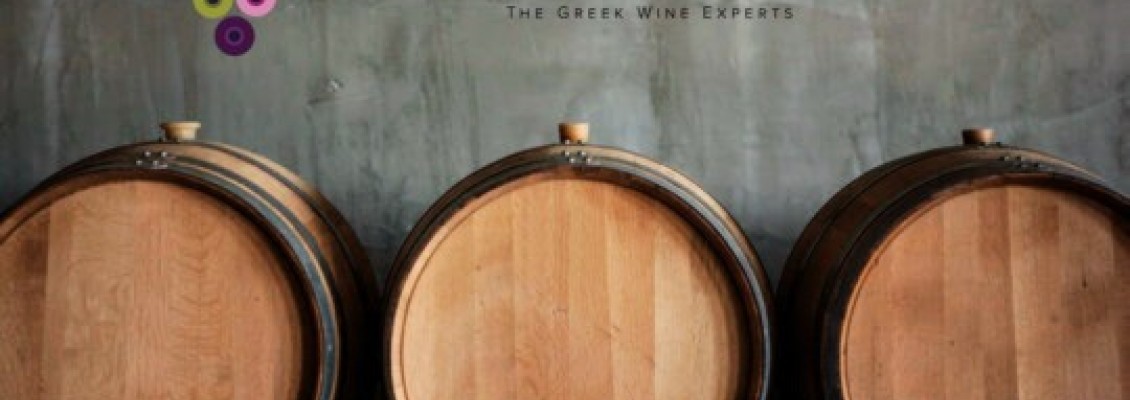Barrel and oak importance in wine: Necessity or exaggeration?

Barrel and oak importance in wine: Necessity or exaggeration?
Looking back on the writer's early days as a budding wine lover, I remember the atmosphere in the discussions and writing at the time, promoting the use of casks in wine as a necessity to upgrade the quality of the bottle and a factor that would ultimately make the content better.
Since then a lot has changed (mainly in the Greek market), producers and consumers have evolved, and the truth is somewhere in the middle.
But let's first see together, what is the importance of using a barrel, and how it affects flavors and aromas:
1. Aroma: the barrel, and in particular its by far the most common form, which is oak, is always able to give notes of vanilla, caramel, spices, nuts, and often smoke (depending on how the wood is burned in the process of its formation). In general, the cask we can simply say will push all the aromas and intensities of the nose, and will give what we define as secondary aromas.
2. Taste and generic mouthfeel: All the above aromas will be found in the mouth as well, with the added bonus of the basic element resulting from the use of the barrel, which is the more oily sensation, fuller and with more body. It's all about style!
3. Tannins: some minimal tannins from the wood will lend a gentle richness, which is perfectly legitimate in pairing with food. Tannins generally give structure to wine (of course even whites) while also helping the aging potential, while in reds in particular they tend to stabilize the color as well.
4. Oxygenation: Wood is a living organism, porous, which allows very small amounts of oxygen to come into contact with the wine. While in general oxygen is the enemy of wine, on the contrary in small amounts it makes it acquire a softer character, additional complexity and of course greater aging potential. A Greek proverb fits well with aging: the wet man is not afraid of water. Paraphrasing, wine that has come in controlled contact with oxygen in its youth, is not afraid to oxidize as it ages!
So, is the use of a barrel really necessary?
Obviously not, and it depends on the goal of the producer, for the style he wants to offer.
Does he want to produce a light, easy-drinking wine with an emphasis on the primary aromatic character of the grape? Obviously he will not use barrels, or at worst he will use very old, therefore neutral ones. A typical example are Rieslings which ... dislike oak like cats the dogs.
On the other hand, does he want to complement a moderate aromatic character, and give extra complexity and body to the wine? He will play with a variety of barrels, and their ages, and will put his experience and magic "hand" into the final blend. This is what generations and generations have been doing in Burgundy and Bordeaux claiming premium quality and prices.
But what are the characteristics of barrels and how do they work?
1. Size: The smaller a barrel, the larger its internal surface that comes into contact with the contents, and the larger it is, the less effect it has on the final result. The most common size is the so-called barrique with a volume of 225 liters, but with an increasing trend many producers are also moving to larger, less impactful barrels, such as foudres that exceed 1,000 liters.
2. Age: You will have noticed many times that the percentages of new and older barrels are mentioned in a blend, because when the barrel is brand new its aromas and general characteristics will pass to the maximum extent and intensities in the wine. When this is bottled, and the cask emptied and preserved, the next vintage to be used again, these intensities will be much lower (hence a diferent character in the final product). Generally, when the barrels are used with the intention of imparting aromas and flavors, they go up to the third or fourth use/harvest, while if the producer wants the opposite, from the fourth year and ... forever!
3. Type of wood: here things are simple, and oak dominates. On the other hand, some more exotic tree choices, such as Acacia, are rarely used for more elegant results in white wines.
4. Wood origin: here the gold standard is France with legendary forests such as Allier, Limousin, Nevers, Tronçais, and Vosges being the (expensive) holy grails. I will never forget a cult producer of Champagne, who ages the base wines in new barrels, and who, on a visit to the winery, spoke passionately to us, exclusively about the ... forests from which the barrels came!
5. Many famous producers prefer oak from forests in Slovenia and Coatia (Slavonian oak) while another big category is American oak. The later gives very characteristic notes of coconut and vanilla that go well will certain well known regions like Rioja.
Tip: if you want to understand exactly what aromas the American barrel gives, smell a bourbon like Jack Daniels! Signature nose!
Cheers!
Stavros Moustakas Oktapodas DipWSET
About the Editor:
Stavros Moustakas-Oktapodas DipWSET has worked as a wine consultant for a large Greek import company and in addition, in strategic and communication positions for Greek wineries.
He holds the WSET Diploma, which he completed with honors, with two international scholarships (best overall performance and best performance in the blind taste exams for the academic years 2016 and 2017).
He has been a judge at the Thessaloniki International Wine Competition, the largest European competition Concours Mondial de Bruxelles, and he is Oinochoos magazine columnist.